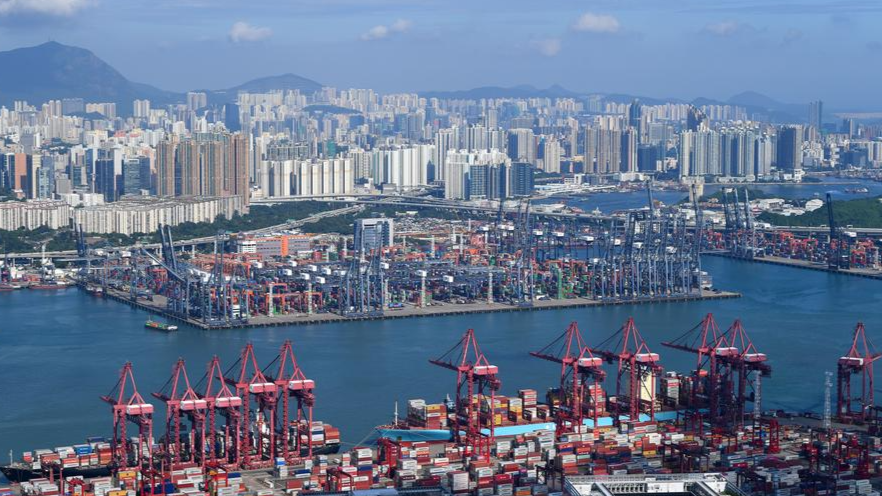
Hong Kong’s merchandise goods export sector recorded better-than-expected performance with exports to the Chinese mainland and other Asian markets increasing dramatically.
The value of total goods exports increased 14.7 percent over a year earlier to HK$434.5 billion ($55.5 billion) in April, after a year-on-year increase of 18.5 percent in the previous month, according to Census and Statistics Department data on Monday.
In the same period, the value of Hong Kong's total goods imports recorded a year-on-year increase of 15.8 percent to HK$450.5 billion. As a result, a trade deficit of HK$16 billion, equivalent to 3.6 percent of the value of imported goods, was recorded in April.
READ MORE: Hong Kong's export volume in Jan-Feb up 4.6% YoY
Hong Kong’s total exports to Asia expanded by 20.8 percent annually in April, with increases registered at major destinations such as Malaysia (61.5 percent), Vietnam (48.3 percent), Taiwan (24.1 percent), the mainland (23 percent) and India (22.5 percent).
Meanwhile, goods exports to the United States rose marginally, while exports to the European Union (EU) fell, with heavy decreases registered in the Netherlands (38.4 percent) and the United Kingdom (24.1 percent).
“As international trade tensions have eased somewhat of late, the headwinds and uncertainties in the external environment have lessened to some extent; the government of the Hong Kong Special Administrative Region will continue to closely monitor changes in the external environment and stay vigilant to the potential impacts brought about by shifts in trade policies,” a government spokesman said in a statement on Monday.
The spokesman added that the sustained steady growth of the mainland economy, together with Hong Kong's proactive efforts to enhance economic and trade ties with different markets, should help buttress trade performance.
“Looking ahead, although the China-US trade war has eased slightly, the outlook remains uncertain and is expected to continue to pose challenges to Hong Kong's external trade performance. If the mainland's stimulus measures can effectively boost domestic demand, it may help support Hong Kong's foreign trade performance,” said Gary Wan Ka-wai, principal economist and strategist at Dah Sing Financial Group.
UBS assumes the current level of 30 percent US tariff hikes on Chinese goods will mostly remain in place for longer (despite some ups and downs in various tariff categories), and the 10 percent US tariff hikes on the rest of the world will mostly stay in place for now.
“We estimate the baseline tariff hikes will likely make China’s exports to the US decline by around 30 percent in the coming quarters and overall exports fall by 6 percent in 2025. We continue to expect another 20 to 30 basis points policy rate cut and more progress with property inventory destocking in the rest of 2025,” said Wang Tao, head of Asia Economics and chief China economist at UBS Investment Bank.
"Tariffs and trade tensions will complicate Asia-Pacific trade flows and supply chains. A structural shift in trade flows means some producers will revisit supply chains and business models,” said Eunice Tan, head of Asia-Pacific Credit Research at S&P Global Ratings.
READ MORE: Hong Kong exports volume up 5.8% in first 10 months
The US-based credit agency said that Asia-Pacific supply chains are still resilient as the region still enjoys a low-cost advantage in global production.
“Taking the case of Asian supply chains as an example: The cost of production in the region is often only a fraction of the cost of producing the same products in the US or Europe, so the currently proposed tariff rates are unlikely to close that gap,” S&P Global Credit Ratings said.
In the first four months of this year, the value of total goods exports and total goods imports increased 11.9 percent and 11.4 percent respectively from a year earlier, resulting in a notable trade deficit of HK$96.9 billion, equivalent to 5.7 percent of the value of imported goods in the period, the Census and Statistics Department said.


